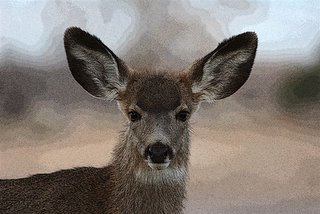
Cheers,
Sorry to have not posted to this site for a few weeks, but illness and other family business had taken priority.
Since the first of the year, my feeders have been somewhat slow, we are still very, very dry and are in desparate need of moisture. Late last night, we had a couple of inches of welcomed snow and I saw nice birds at the feeder today. The female Northern Cardinal returned to take advantage of the safflower and water; six Inca Doves sat on the fence in the sun for a better part of the afternoon, generally, they arrive at the feeder around noon. Other birds today were: 2 Yellow-rumped Warblers, (I have seen five at the water at one time the last couple of weeks, all Myrtle's race) 1 Downy Woodpecker at the suet (she prefers the one with corn), 2 Red-breasted Nuthatches, Blue Jays, American Goldfinches, Dark-eyed Juncos, Cedar Waxwings, Eurasian-collared Doves and two Red-winged Blackbirds, one being partially albino. Earlier in the week I had a female Purple Finch, but she only stayed about ten minutes.
Cats under the feeder continue to be a problem but I am making progress with one neighbor who is keeping her two cats indoors as much as possible. When she saw her little female brutally attacked, near my feeders, by a large, feral male cat, she was determined to keep them indoors as much as possible. She now calls me when she lets them out so I can keep a more careful eye on my feeders and send them home. So far it is working.
My daughter-in-law is becoming more interested in birding and it was very rewarding to hear her excitement about seeing and identifying her first male Ring-necked Duck. As she becomes more adept, I will have reports from Walsh with her sightings. Good birding and thanks to SeEtta for keeping this site going.
Janeal










